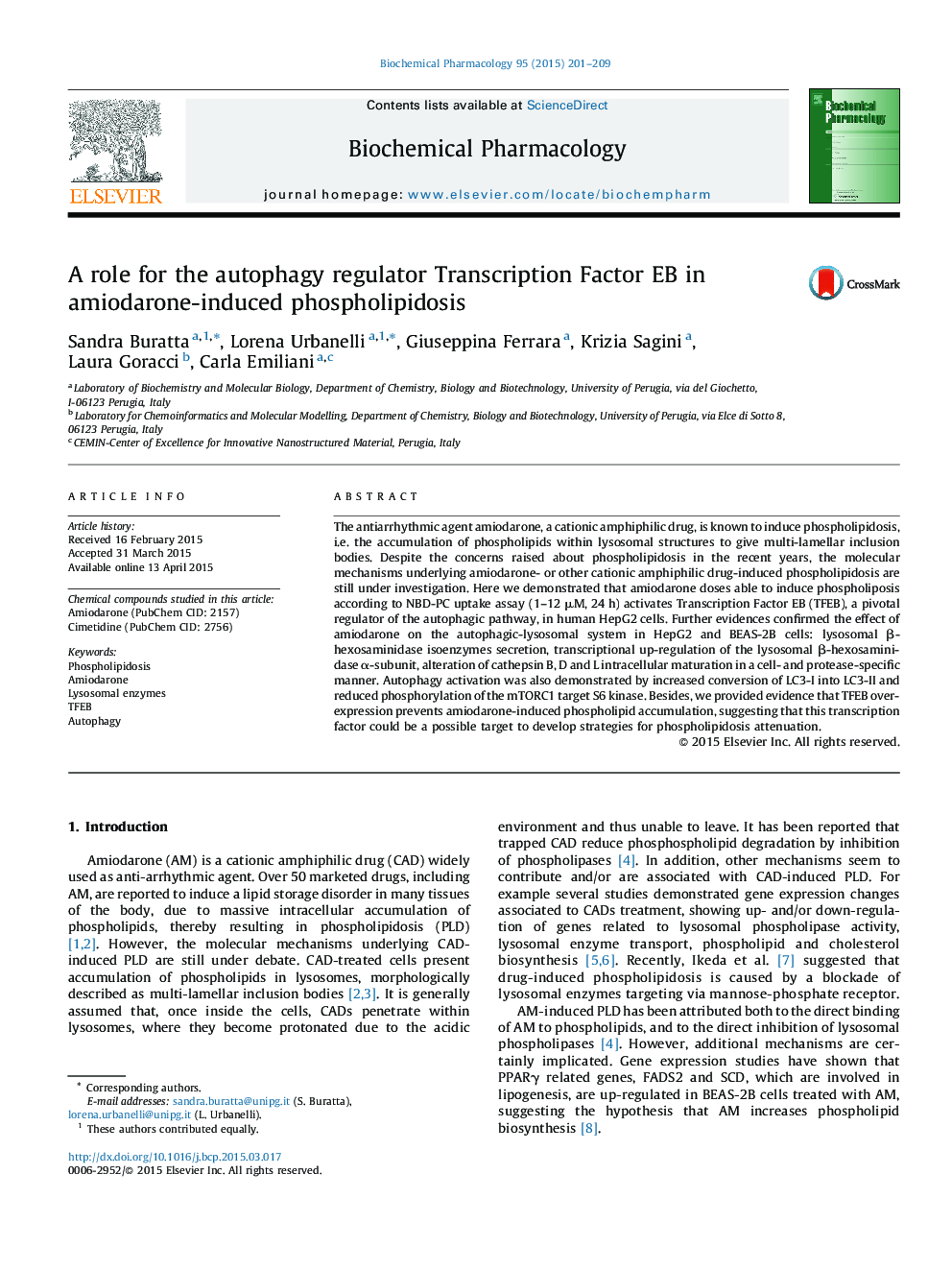| Article ID | Journal | Published Year | Pages | File Type |
|---|---|---|---|---|
| 5823262 | Biochemical Pharmacology | 2015 | 9 Pages |
The antiarrhythmic agent amiodarone, a cationic amphiphilic drug, is known to induce phospholipidosis, i.e. the accumulation of phospholipids within lysosomal structures to give multi-lamellar inclusion bodies. Despite the concerns raised about phospholipidosis in the recent years, the molecular mechanisms underlying amiodarone- or other cationic amphiphilic drug-induced phospholipidosis are still under investigation. Here we demonstrated that amiodarone doses able to induce phospholiposis according to NBD-PC uptake assay (1-12 μM, 24 h) activates Transcription Factor EB (TFEB), a pivotal regulator of the autophagic pathway, in human HepG2 cells. Further evidences confirmed the effect of amiodarone on the autophagic-lysosomal system in HepG2 and BEAS-2B cells: lysosomal β-hexosaminidase isoenzymes secretion, transcriptional up-regulation of the lysosomal β-hexosaminidase α-subunit, alteration of cathepsin B, D and L intracellular maturation in a cell- and protease-specific manner. Autophagy activation was also demonstrated by increased conversion of LC3-I into LC3-II and reduced phosphorylation of the mTORC1 target S6 kinase. Besides, we provided evidence that TFEB over-expression prevents amiodarone-induced phospholipid accumulation, suggesting that this transcription factor could be a possible target to develop strategies for phospholipidosis attenuation.
Graphical abstractDownload full-size image
